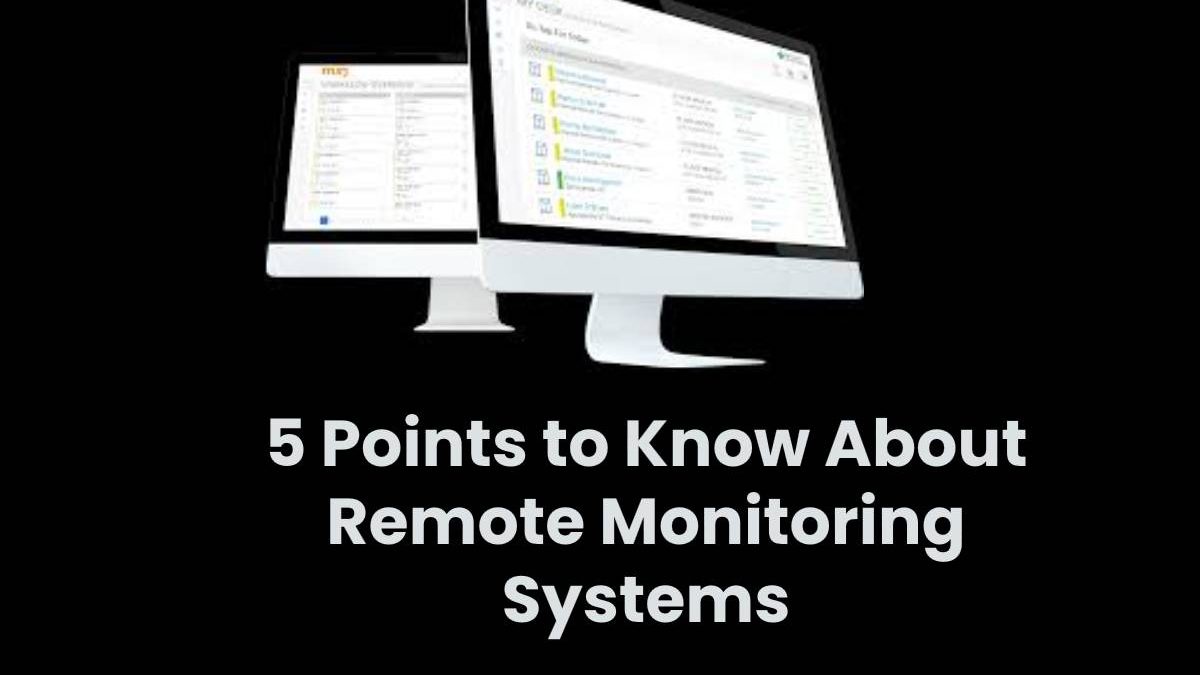Technology continues to evolve and change the way we accomplish tasks. Environmental monitoring is one industry that has experienced growth from innovation in the form of the Internet of Things (IoT). The IoT permits cloud-based, remote monitoring through internet-enabled data loggers that are networked together through a central interface for tracking purposes. In this article, we will explore several points you should know about remote monitoring systems.
Table of Contents
1 – Advantages of Remote Monitoring
Remote monitoring systems bring four main advantages: asset protection, cost reduction, organizational safety, and resource management.
Asset Protection –
Remote monitoring systems are used to monitor assets and products of a sensitive nature and can “watch” these items in various locations through a single, centralized interface. With this form of continuous monitoring, corrections can be made swiftly should a data logger indicate an issue.
Cost Reduction –
Aside from the obvious savings achieved through the reduced loss of sensitive assets or products in inventory, remote monitoring systems are cost-effective in another way as well. They can provide ongoing checks of environmental conditions around the clock which would otherwise be costly if humans had to be paid to take regular readings and manually track conditions.
Organizational Safety –
Remote monitoring systems provide a higher level of safety and security. This is of particular interest when the products being monitored are of a hazardous nature. Being able to promptly respond to environmental changes keeps everyone on-site safe.
Resource Management –
Relieved of manual data logger checks, staff members can focus their attention on other duties because data loggers in a remote monitoring system do not require constant checks; they are designed to operate unattended.
2 – Useful for Scaling to Multiple Locations
Remote monitoring systems are very easy to customize to meet any specific needs. From small to medium to large areas that require constant monitoring of environmental conditions, scalability is not a problem. As Dickson’s guide states, a large organization may require different monitoring points, which makes a remote monitoring system a useful tool. These systems can be implemented to monitor conditions in several different locations in multiple time zones, if necessary. It depends entirely on the number of monitoring points needed.
3 – Heavily Used in Regulated Industries
Probably the one application where remote monitoring systems truly excel is in industries producing and handling products that must adhere to strict regulations. One current example is COVID-19 vaccine distribution in the healthcare industry. These sensitive assets require constant monitoring to ensure products are stored at the correct temperature during transport from Point A to Point B and while in storage at the destination point to prevent spoilage. This can mean from the point of creation, through the entire cold chain to the end-user. For products that require strict conditions for storage, a remote monitoring system is the most logical solution.
4 – Simple to Implement
One of the most attractive aspects of a remote monitoring system is the ease with which it can be installed. When you have selected the location or locations where you wish to monitor environmental conditions, you just install the hardware and configure your account. There is no software to install and the company providing the cloud-based monitoring for your business will take care of all the details. That includes installation support as well as assistance to your on-site IT department to ensure everything is working properly and that the connected data loggers are correctly functioning. You need no special tools whatsoever aside from mounting hardware, in some specific situations, for the interface.
5 – Data Loggers Provide Alerts
Your remote monitoring system is versatile in that it can provide you with alerts in many different formats. It can send text, phone, or email alerts. Your system can also be configured to send those alerts to as many people as you feel need to know of a developing issue. As part of the preferences you program, you can also indicate at what point in the monitoring process an alert should be triggered. This can be when a specific temperature, pressure, or humidity level is reached. You can also opt to have alerts sent at regular specified intervals.
When do You Need a Remote Monitoring System?
Four factors can determine whether or not your business requires the assistance of a remote monitoring system. If you are responsible for products that occupy several locations in multiple time zones, you will benefit from using a remote monitoring system. Businesses that need many different types of environmental monitoring (temperature, humidity, pressure) in the same facility will save time and money with a remote monitoring system. The same applies to companies that manufacture, transport, and distribute sensitive assets. If a business has few employees but requires tracking of products around the clock, a remote monitoring system can be a cost-effective alternative. As you can see, there are multiple applications where a remote monitoring system can fit into businesses of different sizes. It all boils down to the specific needs of the company and its products. In short, whenever something in inventory requires tracking of any kind, but manpower is an issue, a remote monitoring system using data loggers is the solution.
Conclusion
Through innovation, many tasks we used to complete manually can now be accomplished through various types of automated systems. One such system is the employee tracking system and the other is remote monitoring of inventory or products. With an employee tracking system, you can monitor the activities of your employees and track what they are doing. With cloud-based solutions provided as part of the IoT, businesses with multiple products in their inventory or sensitive assets can keep an eye on the environmental conditions in which these items are transported and stored through remote monitoring

